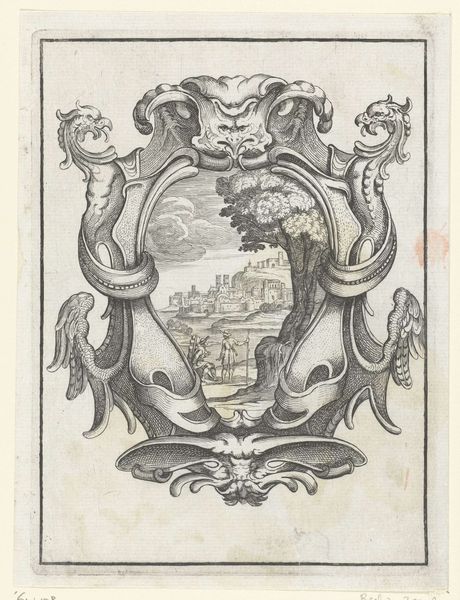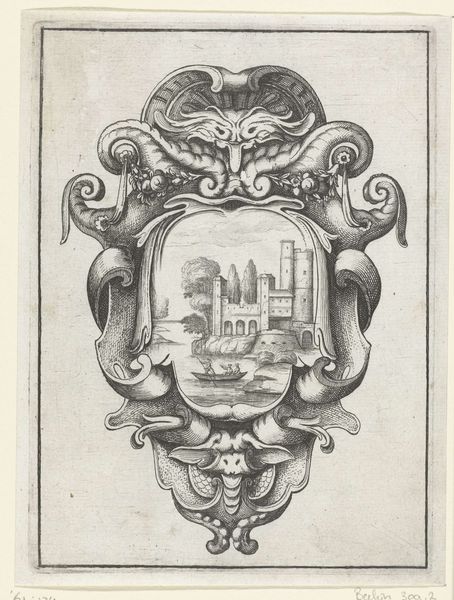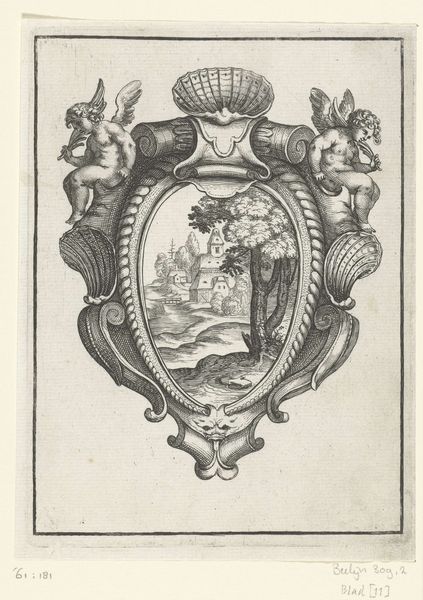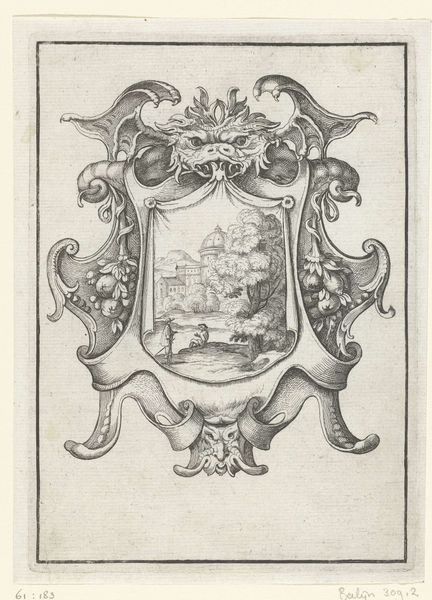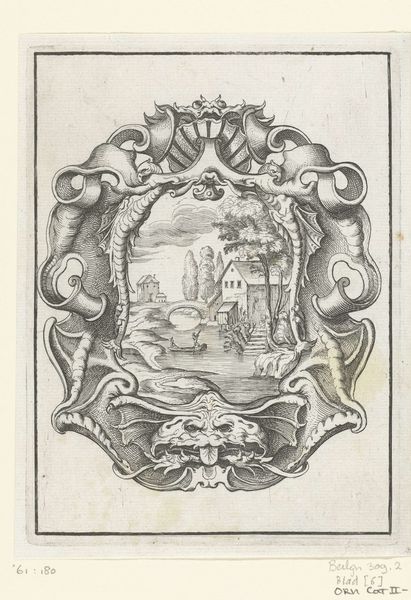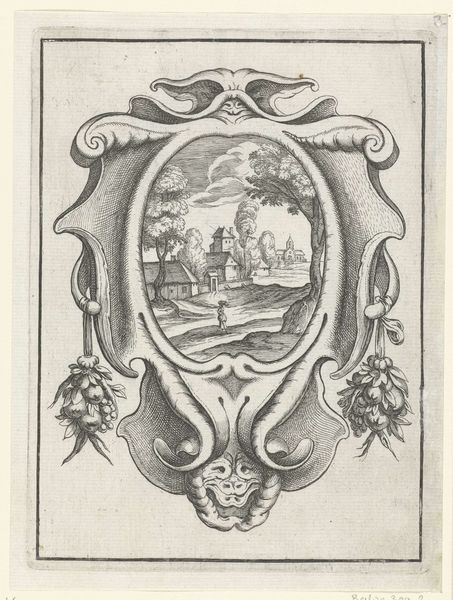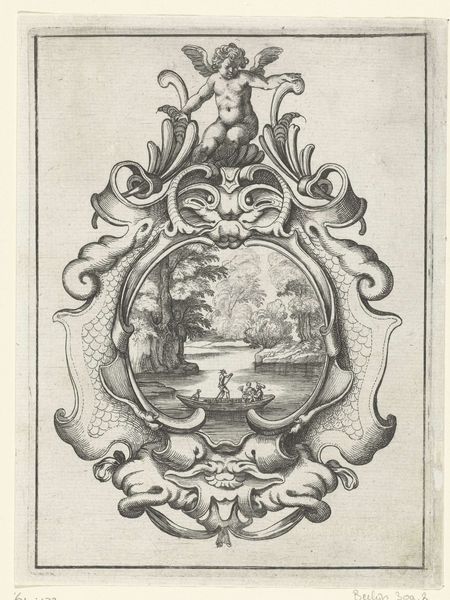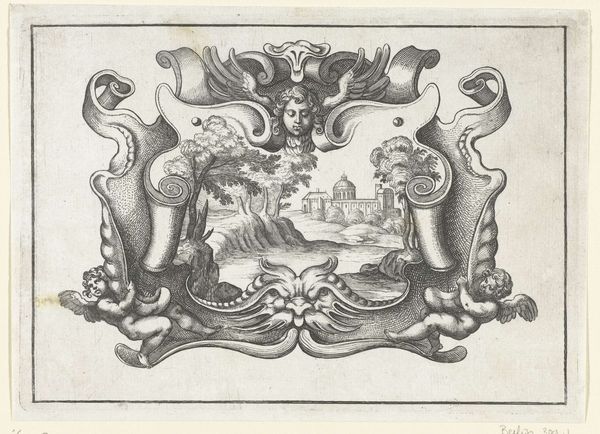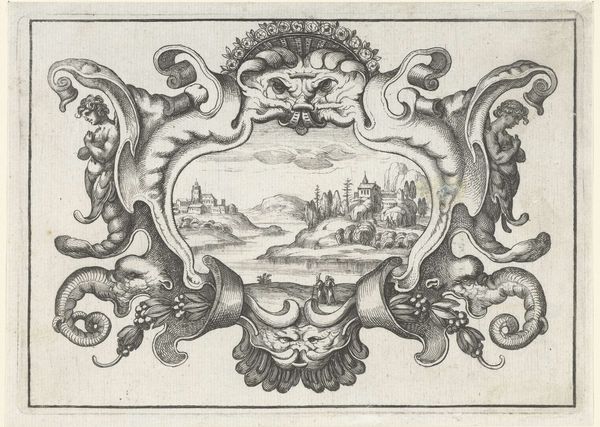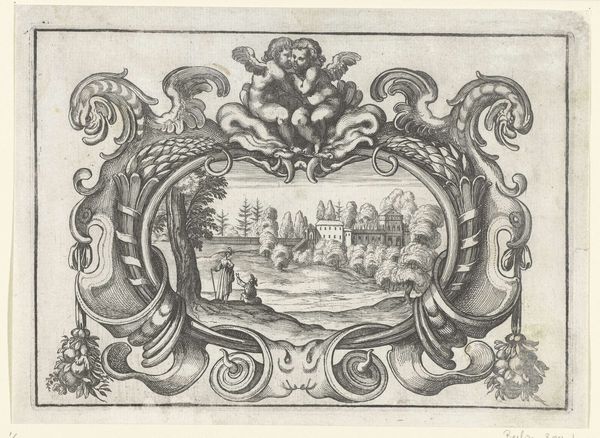
print, etching
#
allegory
#
baroque
#
pen drawing
# print
#
etching
#
landscape
Dimensions: height 177 mm, width 130 mm
Copyright: Rijks Museum: Open Domain
Editor: So this etching, "Cartouche met nautische attributen" from 1632 by Daniel Rabel, frames a coastal scene within this elaborate ornamental border, full of marine imagery. It feels very... contained, yet also evokes a sense of exploration. What strikes you when you look at this piece? Curator: The cartouche itself speaks volumes about the era's complex relationship with maritime power. We see classical symbols – dolphins, seashells – intertwined with tools of navigation, like the compass, framing the landscape of a harbor. It's essentially packaging the sea as a commodity, controlled and understood by those with the right instruments and knowledge. Editor: I see what you mean. Like, it’s not just celebrating the sea, but claiming dominion over it? Curator: Precisely. Consider who would commission such a work. This isn’t just decorative; it’s a statement about power, trade, and perhaps even colonial ambition. Who gets to map the world? Who benefits from maritime trade? It prompts questions about the human cost often erased from such seemingly celebratory imagery. How does seeing it that way shift your initial impression? Editor: It definitely makes it feel less romantic and more...political, maybe? The containment you mentioned becomes less about decoration and more about control, both artistically and politically. Curator: Exactly. The beauty serves to naturalize this claim of dominance. By understanding this context, we move beyond simply appreciating the artistic skill and engage with the ideologies it promotes. Editor: This really opened my eyes. I had never thought that something seemingly innocent could harbor complex political implications. Curator: Art is never neutral. It always reflects and shapes our understanding of the world, and power. Learning to see these nuances is crucial.
Comments
No comments
Be the first to comment and join the conversation on the ultimate creative platform.
